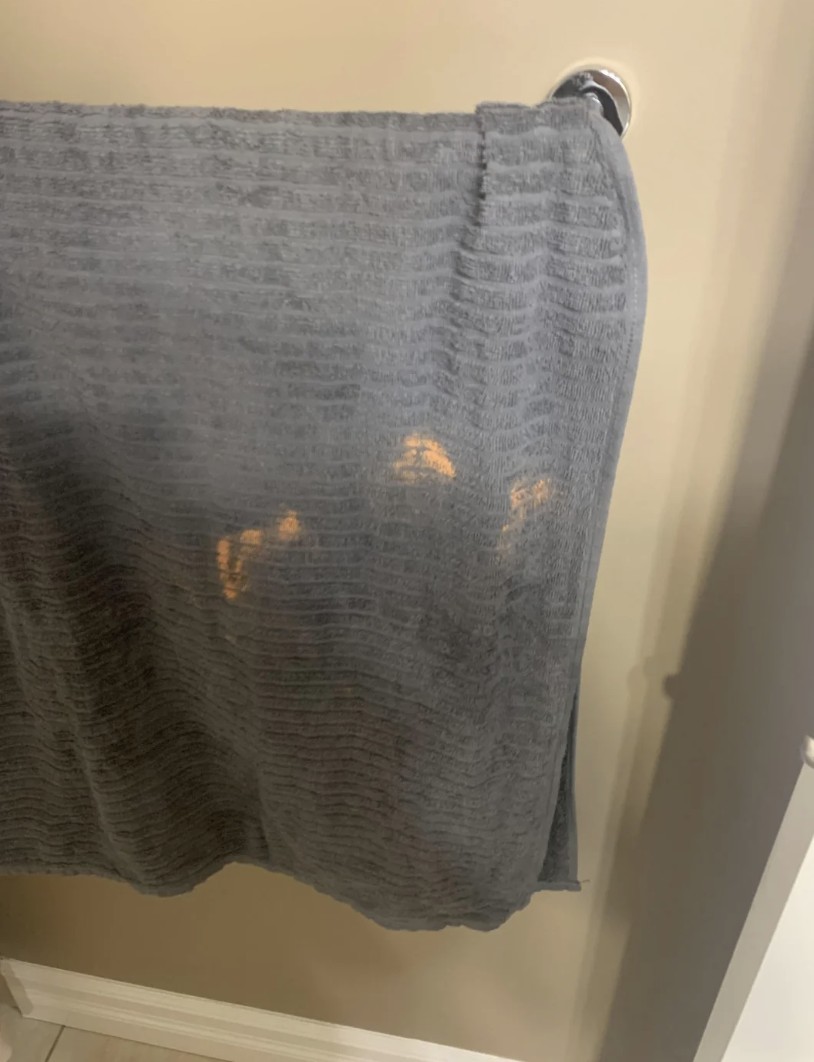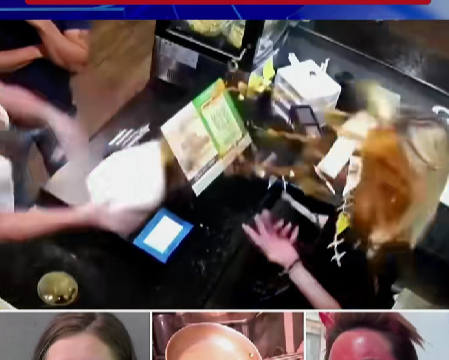I still remember the first time I spotted it—an odd, almost neon-orange blotch staring back at me from my favorite gray hand towel. It didn’t look like a typical stain at all; it seemed to have a faint glow, almost as if I had accidentally taken a highlighter to the fabric. My first thought was that maybe rust from the towel bar had rubbed off, or perhaps I had spilled something and completely forgotten about it.

Confident it would wash out, I tossed it into the laundry with extra detergent, but when it came out, the bright splotch was still there, completely unchanged. Over the next few weeks, a couple more towels developed similar marks, and before I knew it, my bathroom looked like it had been invaded by some kind of pumpkin spice poltergeist. If you’ve ever had towels, pillowcases, or even T-shirts show up with stubborn orange spots that no amount of washing will remove, you’re not imagining things—there are a few surprisingly common causes behind it.
One of the biggest culprits is benzoyl peroxide, the active ingredient in many acne creams and cleansers. This powerful bleaching agent doesn’t just stain towels—it strips the dye right out of the fibers. That’s why the blotches look more like bleach marks than random discoloration, often showing up as orange or yellowish patches, especially on darker fabrics. And because the color is chemically removed from the fibers, no amount of soaking, scrubbing, or special stain remover can restore it. I figured it out when I realized that my nightly routine—washing my face, patting it dry, and sometimes leaning against the towel while brushing my teeth—was giving the fabric just enough exposure to cause permanent damage over time.
But skincare products aren’t the only source. Rust and iron in water can also leave behind orange stains, especially if you live in an area with high iron content in the water supply or use well water. I learned this the hard way while visiting a friend in the countryside—after just two washes, my white towel was covered in tiny rusty freckles. In this case, detergent won’t fix it; you need a laundry additive designed to remove or bind to the iron before it settles into the fibers. Hair products and self-tanners are another sneaky source of staining.
Certain shampoos, conditioners, and treatments that deposit color, along with self-tanning lotions, can leave behind orange or brown patches on towels. Even after the product feels dry on your skin or hair, friction from drying can still transfer pigment. I discovered this when my designated hair towels began showing faint orange streaks, despite never having used self-tanner. It turned out my “warmth-enhancing” shampoo contained just enough pigment to cause staining every time I wrapped my hair. Cleaning products can also be to blame. Bleach, hydrogen peroxide, and even certain household sprays, toilet bowl cleaners, and disinfectant wipes contain bleaching agents that can discolor towels. If you use these products and then dry your hands on a nearby towel, you might unknowingly leave a permanent patch.
A friend of mine once turned her kitchen towels pink during a cleaning spree, only to realize it wasn’t her washing machine—it was her counter spray. Once I learned the main offenders, I started treating my towels like my favorite clothing. I switched to white washcloths for anything involving benzoyl peroxide so the inevitable bleaching wouldn’t be visible. I also began waiting for skincare and self-tanning products to fully absorb before touching fabric, even if it meant awkwardly standing around for a few minutes. For hair care, I set aside old towels specifically for drying my hair so pigment transfer wouldn’t ruin my nicer sets. And in places with iron-rich water, I began using a rust-removal laundry additive. Unfortunately, if the discoloration is caused by benzoyl peroxide or bleach, it’s permanent because the dye is gone from the fibers.
Your only real options are to dye the towel a darker color, repurpose it as a cleaning or hair towel, or bleach the entire towel for a uniform look. Rust or mineral stains, however, can sometimes be removed with fabric-safe rust removers. Learning to spot the difference between chemical bleaching and mineral staining helps. Bleach damage usually appears as larger, irregular patches in areas where your hands or face make frequent contact, while mineral stains tend to be small, speckled, and more randomly placed. Once I learned to read the “pattern” of the marks, I could almost instantly pinpoint the source, which made solving the problem feel surprisingly satisfying.
I’m not completely stain-free—sometimes I still forget I have acne cream on—but I’ve gone from ruining multiple towels every couple of months to maybe one every year or two. If your towels and linens are starting to take on a pumpkin-hued theme, it’s worth looking at your skincare products, water quality, hair care routine, and cleaning habits. Identify the culprit, and suddenly keeping your towels looking fresh and pristine feels less like guesswork and more like a simple matter of avoiding a few key danger zones.





